You are here
Town of Taraz.
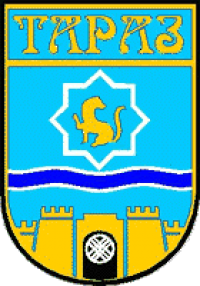
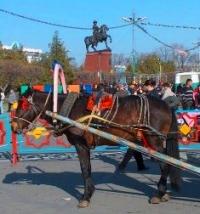
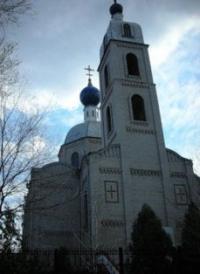
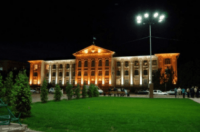
Tours across cities of Southern Kazakhstan.
“Memory's images, once they are fixed in words, are erased," Polo said. "Perhaps I am afraid of losing Venice all at once, if I speak of it, or perhaps, speaking of other cities, I have already lost it, little by little”
Italo Calvino.
Travel Tours in Kazakhstan.
Taraz (Kaz. Taraz (inf.), In Soviet times - Dzhambul) is one of the oldest cities in Kazakhstan, the administrative center of the Zhambyl region. Located in the south of the country, near the border with Kyrgyzstan, on the Talas River.
The city is located at an altitude of 600 to 650 meters above sea level. There is an international airport, shopping centers, entertainment complexes, many squares and parks. Taraz, the administrative, industrial and cultural center of the Zhambyl region. It is located 530 kilometers west of the city of Almaty, on the highway Almaty - Tashkent.
Connected by rail with the cities of Almaty, Shymkent, Zhanatas, Tashkent. Located on the Talas River, in a hilly area to the north of the Tien Shan spurs - Kyrgyz and Talas Alatau. Taraz lies in the southern part of the republic, on a plain in the valley of the Talas River, in a hilly area to the north of the spurs of the Tien Shan - Kyrgyz and Talas Alatau, to the west of Mount Karatau.
Covers an area of approximately 150 square kilometers.
On February 23, 2010, in accordance with the new master plan of the city, the territory subordinated to the city akimat was expanded from 12 833 hectares to 18 787 hectares, while part of the lands of the Baizak and Zhambyl districts of the Zhambyl region were transferred to the subordination of the city akimat, together with 6 rural settlements located there (Kumshagal, Koltogan, Kyzylabad, Kazarma, Choldala and Uchkhoz), as well as 50 summer cottages, land of peasant farms and other objects.
According to the director of the Institute of Archeology. A.Kh. Margulan, academician Karl Baypakov, the territory of the Central Market, "Shakhristan" and "Tazhibay" represent an important historical part of the town.
With the aim of carrying out archaeological excavations of the ancient settlement and the creation of tourism objects, in 2012 - 2014. these markets were relocated to new markets - "Auyl Bereke", "Atakent-Taraz" and the market on Askarov Street.
In 2015, at the suggestion of the President of Kazakhstan Nursultan Nazarbayev, made at the end of October 2014, a celebration of the 550th anniversary of the formation of the Kazakh Khanate was organized in the city, which became an important event in the history of the formation and development of Kazakh statehood, the foundations of which were laid 550 years ago in the tract Zhaisan khanami Zhanibek and Kerey.
The climate of Taraz.
Taraz is located in the depths of the Eurasian continent at the junction of sultry deserts and snowy mountains, it is distinguished, first of all, by a sharp continental climate, extreme aridity, little cloud cover and an abundance of heat.
The position of the city inside the continent, at the junction of northern and southern types of deserts, the presence of snowy mountains in the neighborhood determine the peculiarities of the circulation regime, which is characterized by the predominance of anticyclonic activity.
The climate of the region is intermediate between the continental subtropical climate of the plains of Central Asia and the continental climate of the temperate latitudes of Kazakhstan. In winter, continental air masses of temperate latitudes prevail here.
Circulation processes are determined by the position and activity of the polar and arctic fronts and the position of the “Kazakhstani” spur of the Asian anticyclone. The winter season is characterized by unstable, rather cold weather, caused by a noticeable temperature contrast of air masses, activating cyclonic activity.
In summer, especially in July, small baric gradients contribute to a weakening of circulation processes and cyclonic activity, which almost stops, rather significantly manifesting itself only in small fluctuations in air temperature and cloudiness.
The warmest month is July, with an average temperature of +25.4 ° C. The coldest month is January with an average temperature of -3.1 ° C. Absolute maximum temperature: +43.7 ° C (registered on July 30, 1983). Absolute minimum temperature: -40.0 ° C (registered February 26, 1951).
The annual maximum precipitation is 611 mm (in 1969), the annual minimum is 129 mm (in 1944). The average annual air temperature is 11.1 ° C. Relative air humidity - 60.3%. The average wind speed is 2.3 m / s. The Köppen-Geiger climate classification is BSk / Dsa / Csa.
Climate classification according to Alisov - subtropical continental. The sum of active temperatures during the growing season is 4200 °. The amount of annual sunshine is 2800 hours.
There are 15 micro-districts and a number of residential areas in Taraz. New neighborhoods are being built. All microdistricts have names: Akbulak, Karatau, Zhailau, Saltanat, Talas, Samal, Alatau, Mynbulak, Asa, Zhansaya, Astana, Baiterek, Karasu Massif.
According to the census of the Russian Empire in 1897, there were 11,722 inhabitants in the city of Aulie-Ata (6940 men and 4782 women). The distribution of the population by their native language in 1897: Uzbeks - 72.1%, Russians - 11.6%, Kazakhs - 5%, Sarts - 3.2%, Tajiks - 3.2%, Tatars - 2.2%.
In the Aulie-Ata uyezd as a whole, in 1897, there were 276 169 people, the distribution of the population by their native language was as follows: Kazakhs - 90.8%, Russians - 3.8%, Uzbeks - 3%, Turkic dialects without distribution 0.8% , Sarts - 0.5%, Germans - 0.25%, Tatars - 0.22%, Chinese - 0.16%, Tajiks - 0.13%, Lezgins - 0.1%.
Taraz is a large city in the Zhambyl region. Population - 357 795 people (data at the beginning of 2020). National composition (at the beginning of 2020). Kazakhs - 239 636 people. (66.98%), Russians - 59 746 people. (16.70%), Uzbeks - 23 364 people. (6.53%), Koreans - 7058 people. (1.97%), Tatars - 5277 people (1.47%), Turks - 4974 (1.38%), Kyrgyz - 4895 people. (1.38%), Kurds - 2104 people. (0.59%), Germans - 2000 people. 0.56%), Ukrainians - 1336 people. (0.37%), Dungans - 1300 people. (0.36%), Azerbaijanis - 993 people. (0.28%), Uighurs - 806 people (0.23%), Greeks - 656 people (0.18%), Chechens - 551 people. (0.15%), Tajiks - 541 people. (0.15%), Belarusians - 159 people. (0.04%) and other nationalities - 2399 people. (0.67%). Tthe total - 357 795 people. (100.00%).
The state institution "House of Friendship" was built in the city.
The development of industry and geographical location predetermined the existing transport and communication infrastructure - a railway network with a large transport hub in the city of Shu, connecting the south and southeast of Kazakhstan with the central and north-eastern part of the republic and neighboring states.
An important role in the development of the economy is played by the Zhambyl Oblast Telecommunications Directorate of Kazakhtelecom OJSC, which provides services for local, intercity and international telephone communications, mobile radiotelephone communications, and services for broadcasting television and sound programs.
In the field of telecommunications, work continues to replace obsolete automatic telephone exchanges with more advanced digital stations. There are 10 DAMA national satellite communications systems in operation.
The total length of highways in the region is 4117 km, including 847 km of republican roads. Highways of republican significance Almaty-Bishkek, Almaty-Tashkent-Termez, connecting the republics of Kyrgyzstan, Kazakhstan and Uzbekistan, pass through the city.
In 2009, the construction of the Western Europe - Western China highway was launched in Kazakhstan and in the Zhambyl region, which will be completed by 2013. The total length of the road will be 8,445 km, of which 2,787 km are across the territory of Kazakhstan (across Aktobe, Kyzylorda, Turkestan, Zhambyl and Almaty regions).
The thickness of the asphalt concrete pavement will be 80 cm, the service life of the highway will be 25 years without overhaul, the maximum speed will be 120 km per hour. The project provides for road bridges across a number of rivers, road maintenance complexes, stopping sites, car pavilions, cattle passes, electronic displays.
The city's passengers are transported along 53 routes by 13 transport organizations with a total fleet of 653 buses. In 2019, road carriers purchased 60, and this year it is planned to purchase another 75 new buses.
The presence of reserves of phosphorite raw materials on the territory of the region predetermined the development of the phosphorus industry, which has been dominant for thirty years. At present, its share of output accounts for over one third of industrial production.
Taking into account the real capacity of the domestic market and export opportunities, the available production capacities at the present time and in the considered future are sufficient to fully meet the needs for yellow phosphorus, sodium tripolyphosphate, and mineral fertilizers.
Zhambyl branch of Kazphosphate LLP NDFZ is a large chemical plant for the production of yellow phosphorus (capacity 85,000 tons per year) and phosphorus-containing products of sodium tripolyphosphate (86,000 tons per year), orthophosphoric acid (120,000 tons per year).
Taraz branch of Kazphosphate LLP Mineral Fertilizers - a chemical plant for the production of phosphorus-nitrogen mineral fertilizers for agriculture, ammophos (123,000 tons per year), superphosphate (193,000 tons per year), tricalcium phosphate fodder (70,000 tons per year). The main consumers of the products are concentrated in Kazakhstan, China, Russia, Tajikistan, Kyrgyzstan, Afghanistan, Ukraine and other countries.
"Taraz Metallurgical Plant" is the only enterprise in the republic for the production of ferroalloys (130,000 tons per year) and electrode mass (30,000 tons per year). Industrial processing of agricultural products is one of the main directions of development of the food industry, which produces almost 40% of the city's industrial production.
Implementation of the state agri-food program "Auyl" contributed to a significant increase in the production of meat, dairy products, sugar, flour from cereals, animal feed. More than 30 large, medium and small enterprises are engaged in the production of food products, producing sugar, soft drinks, bakery, pasta and confectionery products, various types of dairy products, sausages and fish products, canned fruits and vegetables.
One of the leading sectors of the food industry is the sugar industry, the development of which is closely related to the beginning of industrial beet growing in Kazakhstan (1932). Effective activity of JSC "Kant" allows annually to increase the volume of sugar production, where, along with raw sugar beets, raw cane sugar imported from Brazil, Cuba, Guatemala and El Salvador serves.
Enterprises of the metallurgical industry and metalworking are steadily operating in the city. The Zhambyl Steel Structures Plant JSC "Imstalkon", founded in 1967, has a strong position in the manufacture and installation of steel structures in the markets of Kazakhstan and neighboring countries.
The enterprise has two powerful installations for the manufacture of steel vertical cylindrical tanks with a volume of 100 to 20,000 cubic meters for storing crude oil, oil products, water and other liquids. The plant's annual capacity for the production of structures is 20,000 tons.
JSC Building Structures Plant is one of the leading enterprises in the metalworking industry, producing assembly structures up to 20,000 tons per year. The plant uses improved tank technology and state-of-the-art automatic submerged-arc welding to reduce lead times and lower manufacturing costs.
The city has production facilities for light industry - for the production of washed wool, leather from cattle skins, as well as leather and footwear production (Factory POSH LLP, Taraz Kozhobuv LLP). The implementation of the State Housing Construction Program gave impetus to the further development of the construction industry.
The city has established the production of building materials - gypsum polymer and gypsum board, tongue-and-groove slabs in Zhambylgips Joint Stock Company, floor slabs, facing tiles, reinforced concrete products, foundation blocks and foam blocks, metal-plastic windows and doors at Gimarat Taraz LLP, Keramik Invest LLP , LLP "Zhambylkhimstroy".
The glass industry is rapidly developing on the basis of existing facilities. The Yuzhny-3 branch of the SAF glass company has launched the production of glass containers for the pharmaceutical and food industries. The enterprise underwent a complete reconstruction with the introduction of modern equipment. The glass production capacity has been increased to 55 tons per day, the range of products has been significantly expanded.
The quality management system ISO 9000: 2000 has been implemented at 147 enterprises of the city, and work on its implementation is being completed at another 10 enterprises. The total electricity consumption in the region in 2011 amounted to 3.3 billion kWh, including LLP "ZhES" - 938.6 million kWh, compared to 2010, the growth is 18.1%.
In 2011, the total energy production in the region amounted to 1.230 billion kWh, while the share of Zhambyl GRES JSC is 868.1 million kWh, compared to 2010, the growth is 22.3%. The design power generation of Zhambyl GRES JSC is 7.38 billion kWh. The main fuel for the project is gas, the backup fuel is fuel oil. Specific fuel consumption - 349 g / (kW • h).
Zhambyl GRES can supply electricity not only to the south of Kazakhstan, but also outside the region via networks with a voltage of 110, 220, 500 kV. With the commissioning of the Zhambyl GRES, the reliable power supply to the South of Kazakhstan is increasing.
The station is staffed to operate in a 4-block mode. If necessary, with a change in the shift of work, the station can work in 5 block mode. To date, Zhambylskaya GRES JSC operates in 3 block, gas-oil mode with a load of 450 MW. The consumption of natural gas is 28,000 m³ per hour, fuel oil - 102 tons per hour.
In 2011, 138 second degree technological failures occurred in the networks of ZhES LLP, which is 38.2% lower than in 2010. At the same time, in 2010, the shortage of electricity supply to consumers amounted to 409 thousand kWh, which is 28.6% lower compared to the same period.
As in previous years, in 2011, the main equipment and power lines were modernized and repaired. The result of the work done was a decrease in losses from 20.4% in 2009 to 18.09% in 2010 and 17.38% in 2011.
As part of the accelerated industrial and investment development in 2011, the production of energy-saving LED lamps with a capacity of 5,000 lamps per year began. Since February 2010, with the support of AREM and the Akimat of Zhambyl region, the implementation of the Automated System for Monitoring and Accounting for Electricity (ASKUE) has begun in the Zhambyl region.
To date, at the expense of the company and within the framework of the current legislation, through the conclusion of individual contracts, about 20 thousand electric meters with remote data transmission have been installed.
The principle used for the operation of the AMR is to transfer data from each electric meter via a 0.4 kV power network (PLC technology) to a data collection and transmission device, and then, via a GSM channel, to a power sales information processing center.
Excessive losses of electricity in 2010 and 2011 in the areas of implementation of the ASKUE system were eliminated. It was also possible to determine the actual losses, which previously amounted to about 30 - 40% in the utilities sector, 35 - 45% in the private sector.
Now, with the introduction of ASKUE, losses have decreased in the utilities sector to 7 - 8% and to 15% in the private sector. Clean energy is slowly taking root in the southern region. In South Kazakhstan, for example, entrepreneurs are going to produce solar batteries and use the potential of biogas plants.
The state encourages investment in the construction of hydropower plants and solar technology. In order to develop and use renewable energy sources, on December 5, 2011, one of the first wind power projects in Kazakhstan and the first industrial facilities for generating electricity using wind - the 1.5 MW Kordai wind farm, built by Izen-Su, was commissioned.
In 2011, financing was attracted and work began on organizing the construction of the Karakystak HPP with a capacity of 2.1 MW in the Turar Ryskulovsky region and the Tas-Otkelskaya HPP with a capacity of 9.2 MW in the Shu region.
The commissioning of the two mentioned HPPs is planned in the 4th quarter of 2012. In the period from 2012 to 2016, the region plans to build up to 10 hydroelectric power plants with a total installed capacity of 57 MW and 4 wind farms with a total installed capacity of 623 MW. Also, it is planned to build a solar power plant, at the first stage with a capacity of 24 MW. Subsequently, based on the practical results of the operation of the first stage, it is planned to increase the installed capacity to 2000 MW in the Zhambyl region.
For the development of renewable energy sources, the Zhambyl Akimat in 2010 created the GKP Zhambyl Hydroenergo, which is now working on a number of interesting projects. There are already three small hydroelectric power stations on a mountain river in the Merken Gorge.
One of them was built relatively recently with a capacity of 1.5 MW (the old ones with a total capacity of 2 MW). The payback period for hydroelectric power plants can range from 8 to 12 years. They depend on their cost, capacity, the actually generated volume of energy per year and the degree of support from the state.
The operation of the hydroelectric power station cannot be called stable. It depends on the amount of water in the rivers. During the dry period (December - March), their production decreases, in the high-water period (May - October) it rises.
Wind power also attracts the attention of specialists. And not only in words. The Izen-Su company recently launched a wind turbine with a capacity of 1.5 "green" megawatts in Kordai. In the coming years, 4 more wind farms with a total capacity of 623 MW are to appear in the Zhambyl region near Zhanatas, the village of Shokpar in the Shu region, in the area of the Muzbel and Kordai passes of the Kordai region.
The advantage of wind farms is that their operating mode is smoother than that of hydroelectric power plants, since the wind can blow at any time. All electricity generated by already built renewable sources is supplied to the general networks of companies, which, in accordance with the current legislation, are obliged to provide their resources for connection to the main power line.
In recent years, there has been a tendency for the progressive development of investment activities in the region. The structure of investments in fixed assets is dominated by own and borrowed funds of enterprises and organizations, directed to renewal and modernization of fixed assets.
The investment policy is aimed at stimulating private investment in investment projects to create industries that produce competitive products. Within the framework of the Forced Industrial and Innovative Development Program of the Republic of Kazakhstan, two investment projects have been implemented on the basis of Energy-Taraz and Taraz-Tartu LLP.
Budget funds are financed for the implementation of the state housing program, as well as for the construction and reconstruction of engineering networks and the development of the city's infrastructure. The development of the master plan has been completed and the state urban planning cadastre of the city is being developed.
Small business today is acquiring key positions in the development of the city's economy, contributing to the solution of the problem of employment of the population and filling the market with domestic goods and services, is actively involved in the process of industrial and innovative development.
Currently, 22,689 business objects are registered in Taraz, of which 16,684 or 74.3% are actively working. In 2011, private entrepreneurs produced goods worth 91 billion tenge, and 11.6 billion tenge of tax payments were transferred to the budget.
Small businesses provide 36% of tax receipts from payments to the state budget. Every year, socially significant projects for the city are credited at the expense of the local budget. The volumes of lending to small businesses by branches of commercial banks and microcredit organizations are growing. Thanks to the development of small business, new industries, modern shopping malls, cinemas and entertainment centers have been opened in the city.
Enterprises and organizations carry out trade operations with 52 countries of the world. The main partners of foreign trade relations are Russia, Kyrgyzstan, India, China, Poland, Italy, Germany, Brazil, Cuba and other countries of the near and far abroad.
The largest volume of export supplies falls on the products of the chemical industry - yellow phosphorus, sodium tripolyphosphate, mineral fertilizers, phosphoric acid, rural and textile - woolen tops, flour, flour products. In the structure of imports, the largest share belongs to raw materials for the production of chemical products, raw sugar, machinery and equipment.
Mass media in Taraz. Taraz newspapers.
Znamya Truda is one of the oldest newspapers in Kazakhstan, published since 1919. In 1979, by the Decree of the Presidium of the Supreme Soviet of the USSR, the editorial board was awarded the Order of the Badge of Honor.
Today, the publication occupies the niche of an influential Russian-language newspaper, whose opinion is taken into account by government agencies and business circles. The newspaper tops the press ratings of the region due to its positive conceptual orientation, high-quality journalism and the use of the latest technologies of the print market and the Internet.
The weekly socio-political newspaper "Zhambyl-Taraz" was first published in February 1996. The first editor of the newspaper is Darkhan Baytuov. The newspaper is the leading printed organ of the city of Taraz, published in Kazakh and Russian, and each of these publications is unique and does not copy each other, that is, these are two multilingual newspapers in one.
In 2012, the newspaper "Zhambyl-Taraz" was recognized as the best mass media in the republican project "Golden Leaders". For 24 years of its existence the newspaper She was awarded numerous diplomas and certificates of the city and regional akimats, enterprises and organizations of Taraz.
The collective maintains the newspaper's reputation as an objective and professional media organ in every sense. Magnolia is a weekly regional newspaper. Starting from June 1, 1995, she pleases her readers with fresh information. A new issue of the newspaper is published every Wednesday. On the 24 pages of the issue, everyone will find what is interesting to him - whether it is news from Kazakhstan or news from a car. Every day, the newspaper's correspondents search for hot topics and collect the latest news for the next issue.
"New Region" is a weekly regional advertising and information newspaper, which has been published since January 13, 1999. According to a 2005 study by an independent marketing company, the newspaper was named “Newspaper No. 1 in Taraz”, which remains in this position to this day.
The newspaper has the largest database of both private and commercial advertisements, which are updated weekly not only in the printed version, but also in the electronic one, that is, on the website owned by the editorial office of the New Region newspaper. News, announcements, photo plots, letters from readers, video, editorial office.
The magazine "Prospect Abai". The journal "SER" (Sports and Economic Review) is the first information and analytical full-color magazine in the Zhambyl region.
Radio and TV Taraz.
"Kazakstan-Taraz" TV channel. The first regional TV channel of the Zhambyl region. This became one of the main events of the time when society needed information - the event became truly historical in the context of the region.
After a 21-year hiatus, Zhambyl television became the first collective to join the electronic information space. 6 days after the opening of the TV channel, the first live broadcast of the “Parade of Trudoviks” was held from the central square.
After Kazakhstan gained independence in 1991, the daily airtime (except Saturday, Sunday) was extended by one hour. Today, the total airtime of the ZhF JSC RTRK "Kazakhstan" is 98 hours a week, a day - 14 hours.
Broadcasting is conducted in accordance with the legislation of the republic and, in general, in accordance with the language policy, that is, the ratio is observed: 60% of airtime in the state language and 40% in Russian. The TV channel produces 30 of its own programs, including 6 socio-political, 5 cultural, national-ethnographic, 4 socio-economic, one project about religion, two sports programs, children and other programs.
The coverage of copyright programs per week is 2660 minutes (44.3 hours), per day - 380 minutes (6.3 hours). Kazakh-language programs take 1,015 minutes a week. The indicator of broadcasting in the Kazakh language varies from 60 to 85% on different days of the week.
TV channel "77 TV". In 2016, on April 18, in the Zhambyl region, a new television channel "77 TV" was launched and is currently actively developing a high popularity rating not only among the local population, but throughout Kazakhstan, thanks to the release through ID TV, DIGITAL TV and ALMA TV throughout republic, and via cable Otau TV to the city of Taraz and districts of the region. "77 TV" today is already very popular in the Internet space.
The 77 TV channel broadcasts 16 hours a day with 5 one-time “Novosti” broadcasts in 2 languages. Among them are the programs of the "Journalist zalғauy" channel - this is a journalistic investigation on a particular topic, a problem in society. "Business uatyty" is a program in which leading entrepreneurs of the Zhambyl region tell about their achievements, an open conversation is held about the problems of entrepreneurship in the region.
The new 77 TV channel is equipped with all necessary broadcasting equipment, equipment and modern technologies, has its own building and vehicles. The channel has good human resources; specialists from Almaty, Aktobe, and South Kazakhstan region are also involved.
Taraz news agencies.
Ek-Sport (economics-sport). Taraz has a large number of scientific, pedagogical and cultural organizations, including the Research Institute of Water Management. In Taraz, even in Soviet times, there were three universities: the Dzhambul Irrigation and Land Reclamation and Construction Institute (with a branch in the city of Karatau), the Dzhambul Institute of Light and Food Industry and the Dzhambul Pedagogical Institute.
In 1998 Zhambyl Irrigation and Construction, Zhambyl Institute of Light and Food Industry and Zhambyl University were merged into Taraz State University named after M. Kh.Dulati. Today there are 2 state universities in Taraz - Taraz State University named after M. Kh. Dulati (TarSU), Taraz State Pedagogical University (TarSPU); 1 private university - Taraz Innovation and Humanities University (TIGU).
Secondary specialized educational institutions in Taraz.
In Taraz, a large number of secondary specialized educational institutions, including: Zhambyl Humanitarian College named after Abai, Zhambyl Medical College, Zhambyl Polytechnic College and many others. 60 public secondary schools, of which 14 are gymnasium schools. In addition, there are 4 specialized schools for gifted children, and 1 Nazarbayev Intellectual School of Physics and Mathematics.
The network of private schools is growing. These are the schools "Asia", "Inzhu", "A-Staus". In all gymnasium schools, an in-depth study of both social humanitarian and natural-mathematical disciplines is carried out. Starting in 2016, elements of trilingual education are being introduced.
Gymnasium schools 1, 5, 7, 8, 12, 15, 24, 39, 40, 41, 45, 49 are famous for their high level of educational services. In 2017, the status of gymnasium schools was assigned to schools number 30 and 53. There are a Center for out-of-school educational work, a Center for the Development of Technical Creativity of Schoolchildren, an art and music school.
There is a madrasah that provides a special Muslim education. There is a football club "Taraz" in the city. Its home arena is the Central Stadium with a capacity of over 12.5 thousand spectators. Boxing and wrestling schools from the Soviet era to this day are the forge of Olympic champions.
Among them are Ermakhan Ibraimov, Bakhtiyar Artayev, Akzhurek Tanatarov, and others. A modern sports complex "TARAZ-ARENA" was opened in the new microdistrict "Baiterek". Young, but already recognized judoist Eldos Smetov, who became the first Kazakhstani world champion among juniors, was born in Taraz.
Today Taraz is a large city, the center of the chemical, food and sugar industries of the republic.
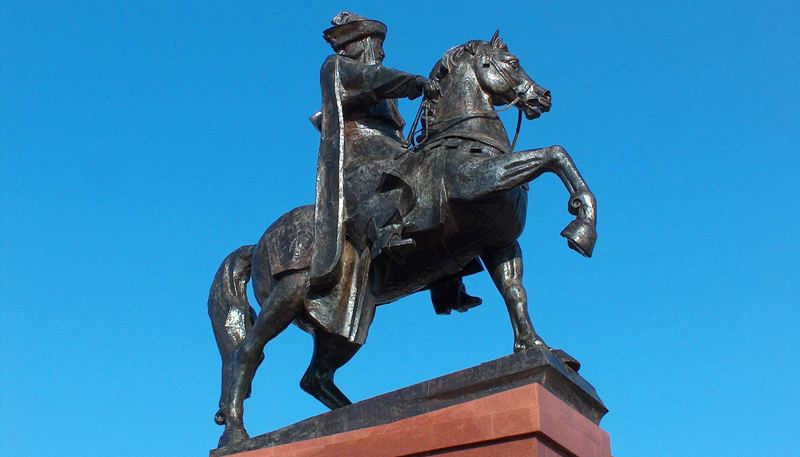
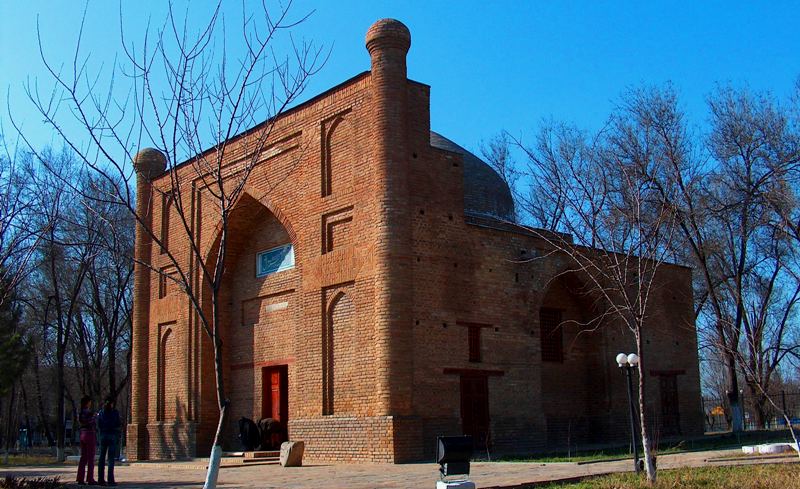
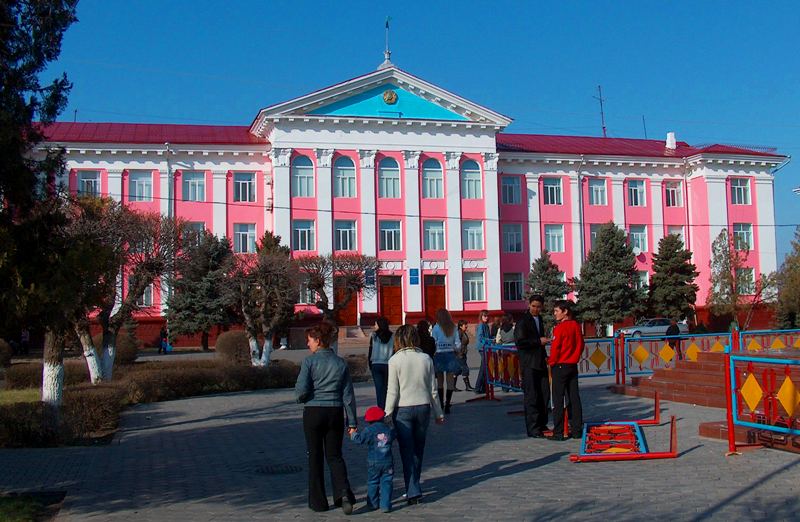
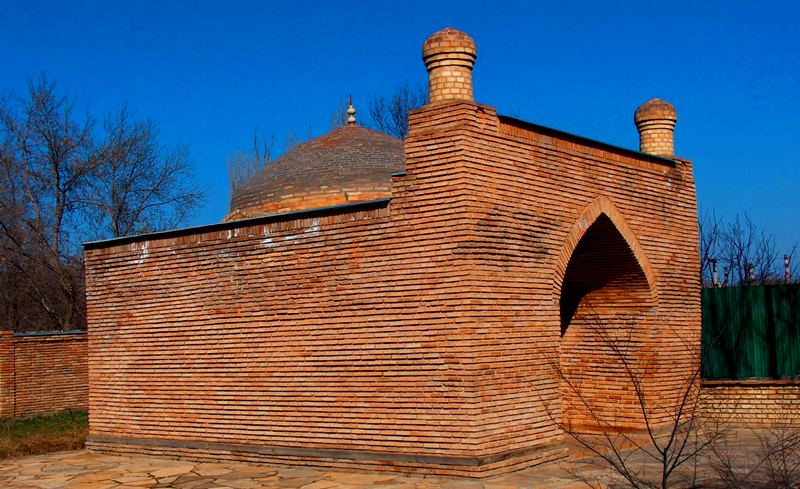
Authority:
https://ru.wikipedia.org/wiki
Photos by
Alexander Petrov.







